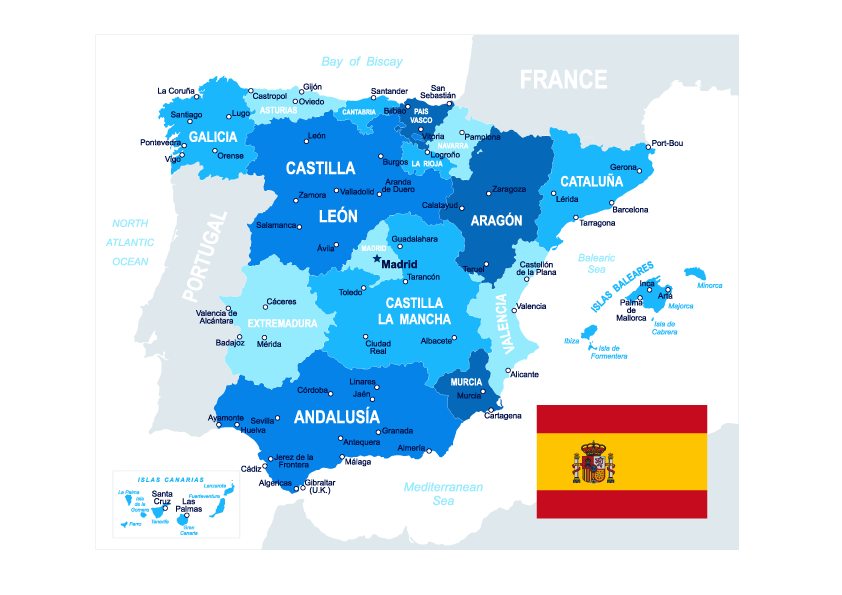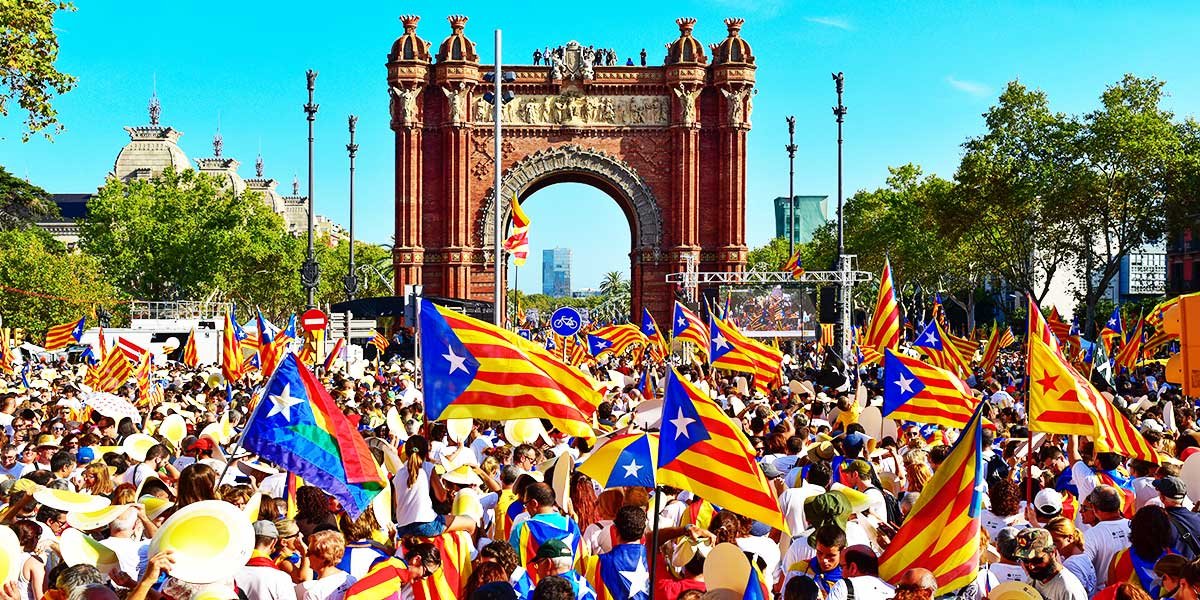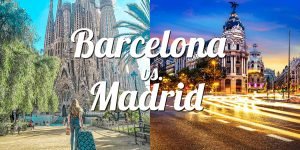Catalonia, arguably one of Europe’s most stunning regions, quickly became my new home, just a few short months after my first visit. Its allure is undeniable, and I can vouch for it firsthand.
Ever since the independence referendum, there’s been a buzz around Catalonia. People are curious – “Is Catalonia a country?” and “Is Catalonia independent?” or even “Is Catalonia part of Spain?” These questions have been floating around, and together, we’ll unravel the answers as we delve into Catalonia’s unique identity, rich history, and vibrant culture.
Having resided in this region for several years and being married to a local Catalan, I’ve got the inside scoop. So, let’s embark on this journey, as I guide you through the scenic northern region of Spain – the captivating Catalonia.
What to find out in this post
Is Catalonia a country?
Catalonia is not an independent country but an autonomous region in the northeast of Spain. Although the country has independent administrative powers in some fields (similar to the states in the United States or federal states in Germany), it is subject to the Spanish state government in Madrid. It is, therefore, part of Spain.
Is Catalonia independent?
Catalonia is not independent but is subject to the legislation of the Spanish national government in Madrid. The Catalan independence referendum in October 2017 was declared illegal by the Spanish government.
What is Catalonia?

Catalonia, also called Catalunya in Catalan, is one of 17 autonomous regions of Spain. The region is located in the northeast of Spain, bordering France and the Pyrenean state of Andorra.
Catalonia has two official languages, Spanish and Catalan. Culturally, you can also find typical Spanish traditions and Catalan.
What are autonomous regions in Spain?

Spain is divided into 17 different autonomous regions. The individual autonomous regions have different administrative areas in which they can govern independently.
Nevertheless, they are generally subordinate to the Spanish central government in Madrid and must comply with the integral Spanish laws.
You can imagine the autonomous regions of Spain a little bit like the federal states in Germany or the different states of the USA – only with less autonomous decision-making power.
Where is Catalonia

The autonomous community of Catalonia is located in the northeast of Spain. It borders France and Andorra to the north, Aragon to the west, the Mediterranean Sea to the east, and the autonomous community of Valencia to the south. Catalonia’s capital is Barcelona, the second largest city in Spain.
Is Catalonia in the EU?

As an autonomous region within Spain, Catalonia is also an EU member. However, the area is not an independent member but is represented by the Spanish central government.
Spain joined the EU in 1986, along with neighboring Portugal.
However, should Catalonia declare independence from Spain one day, it would automatically be excluded from the EU.
The History of Catalonia

To better understand the Catalan conflict, we should first briefly examine Catalonia’s history and its relationship with Spain throughout the years.
Catalonia and Spain throughout History
The fascinating history of Catalonia began as early as 1000 BC when the Iberians discovered the land for themselves. Later, the Romans and Visigoths came and left their mark.
During the 8th and 9th centuries, the Franks formed various counties in the region. But the real turning point came with Count Wilfried the Hairy. He united all these counties at the end of the 10th century and separated them from the rule of the West Frankish kings.
In the 12th century, a marriage policy created the Crown of Aragon, which established itself as a dominant power in the western Mediterranean, composed mainly of Catalonia and Aragon, with Catalonia as its vibrant economic and cultural heart.
The next decisive change came in 1469 when Ferdinand of Aragon and Isabella of Castile married. Their union created the Kingdom of Spain, but Catalonia retained its political autonomy. However, during the Franco-Spanish War (1635-1659), Catalonia had to surrender part of its northern Catalonia territory to France. Catalonia fought bravely in the War of the Spanish Succession (1700-1713) but could not prevent the destruction of its self-government.
In the 20th century, Catalonia had to endure ups and downs. It regained its autonomy during the Second Republic and after Franco’s death. Even if this autonomy was temporarily suspended during the Spanish Civil War and under Franco, Catalonia always managed to expand its rights.
The Catalonia Crisis & the Independence Referendum 2017
In 2006, Catalonia enacted a Statute of Autonomy, later declared partially unconstitutional. In the wake of economic problems, the Catalan government sought independence, which led to controversial referendums in 2017.
Catalonia’s independence referendum was declared illegal by the Spanish government in advance. Despite this, the vote took place across Catalonia on October 01, 2017.
Although the Spanish police tried to prevent the referendum and to keep the Catalan population from voting, there was a turnout of 43.03%. Of this, 90.18% voted for Catalonia’s independence from Spain.
After the results were published, the Catalan regional government voted for Catalan independence. As a result, the Spanish government disempowered the Catalan regional government in relation to Article 155, and new elections were initiated in Catalonia.
Following the 2017 vote, separatist leaders were imprisoned and charged with rebellion and misappropriation of public funds. Catalan Prime Minister Puigdemont fled to other European countries. Despite heavy prison sentences handed down in 2019, separatist leaders were pardoned in 2021, and the offense of rebellion was lifted in 2023.
Consequences of the independence referendum
After the condemnation of the separatist leadership of Catalonia, political unrest and sometimes violent clashes and demonstrations occurred over a long period throughout the region, and the yellow ribbon became a symbol calling for the release of political prisoners.
The newly elected president of the Catalan Generalitat in 2018, Quim Torra, was also banned from office in 2020 after using the yellow ribbon and other political symbols in the region and contributing to its distribution.
The current situation in Catalonia
While the situation in Catalonia has largely calmed down, the Catalan conflict is still unresolved. Every year on Catalonia’s national holiday, September 11, there are demonstrations throughout the entire region.
Catalonia’s Culture

As you can see, Catalonia has been independent from Spain throughout its history, building its own culture and national pride. Even today, with its official language and divergent traditions, Catalonia sees itself as an independent cultural nation.
An important point that separates Catalonia from the rest of Spain is its second official language, Catalan. The Catalan language shapes the region, its identity, and its culture. Even though Spanish is also spoken, the Catalan language is a clear difference from most other regions of Spain.*
But also Catalonia’s gastronomy is different. Besides typical Spanish dishes like Tortilla de Patata and Spanish Tapas, there is a wide variety of Catalan dishes, like the traditional Calçotada in spring, Botifarra, or Pa amb tomàquet.
Another difference is traditional music and dances, such as the Sardana dance, while Spain itself is more associated with Andalusian flamenco. Or the typical Catalan Christmas traditions such as the Tiò de Nadal or the Caganer.
Also, the famous in the region “human towers,” the Castellers, is a typical Catalan tradition, which is somewhat unusual in the rest of Spain.
*Dialects of Catalan are also spoken in the Valencian Community and the Balearic Islands.
FAQs about Catalonia’s Identity
Catalonia is not a country in its own right but one of the 17 autonomous regions within Spain.
Catalonia is one of the 17 autonomous regions of Spain. These are similar to federal states but cannot influence the overall legislation of Spain.
Catalonia is not a city but an autonomous region of Spain. The capital of Catalonia is the city of Barcelona.
Part of Catalonia had to be ceded to France after the French War and is still known today as Northern Catalonia (Catalogne du Nord).
Barcelona is the capital and seat of government of the Spanish autonomous region of Catalonia.










